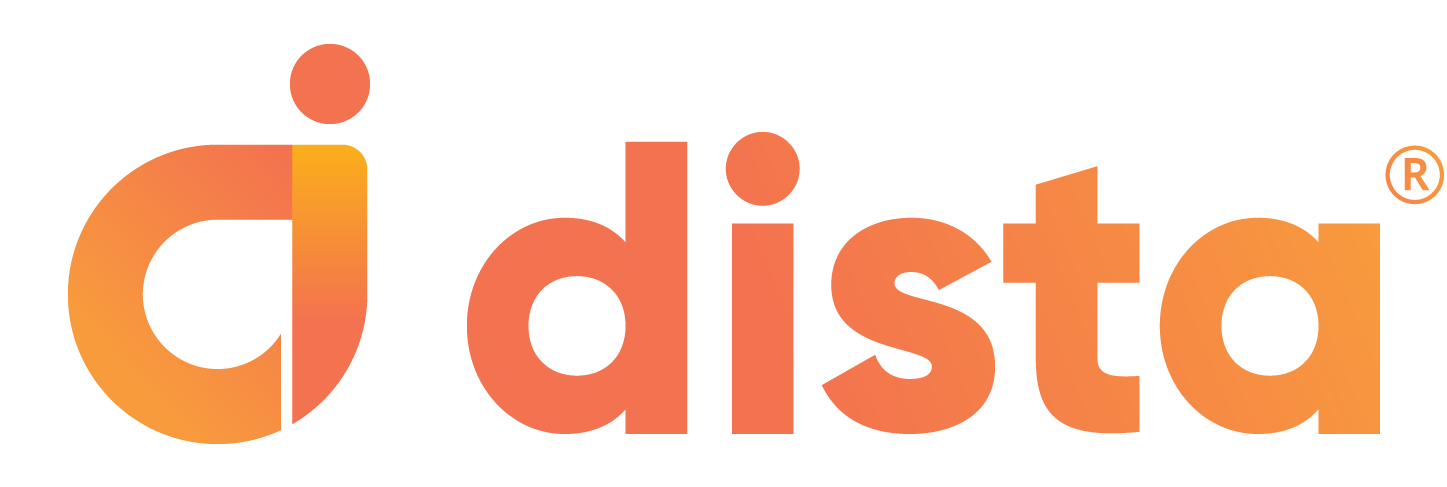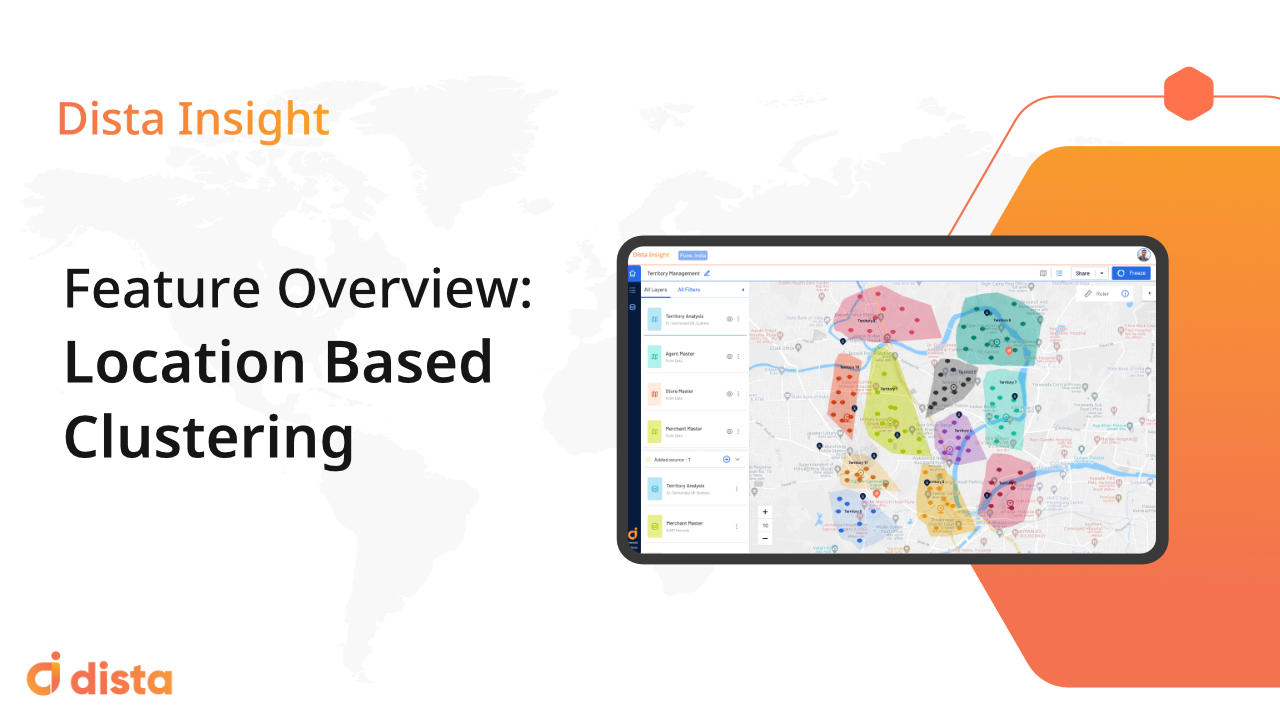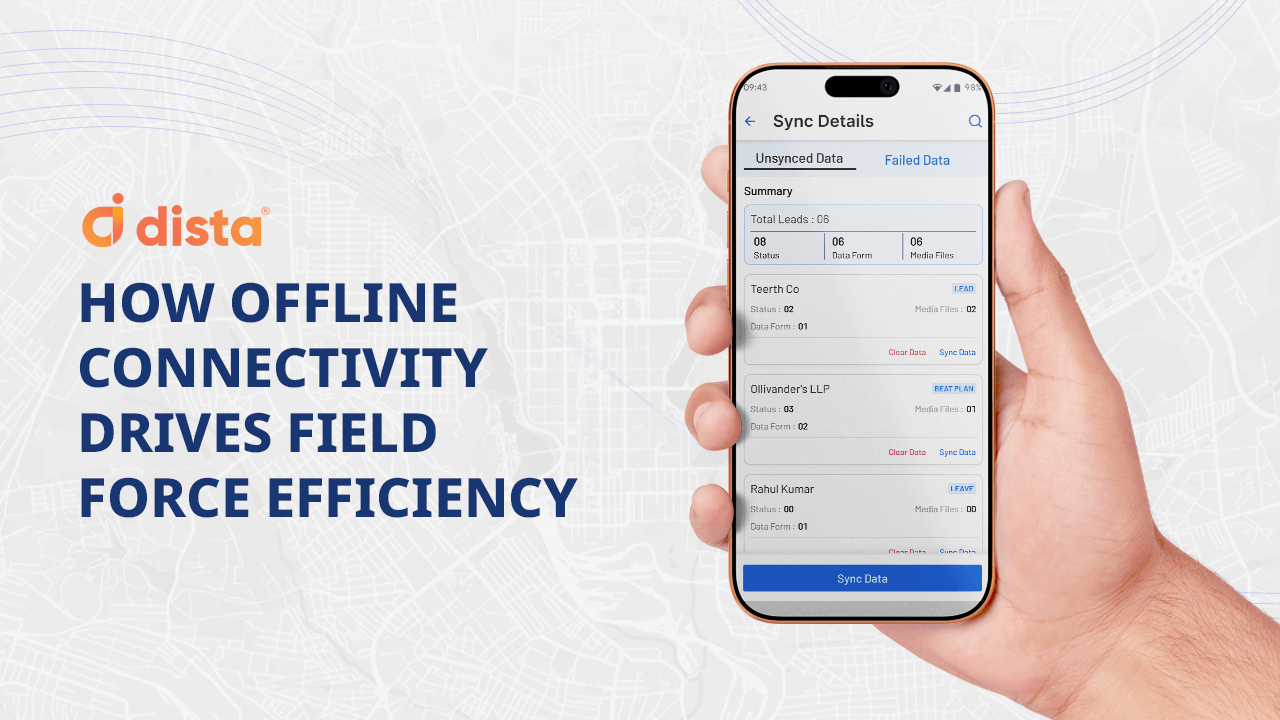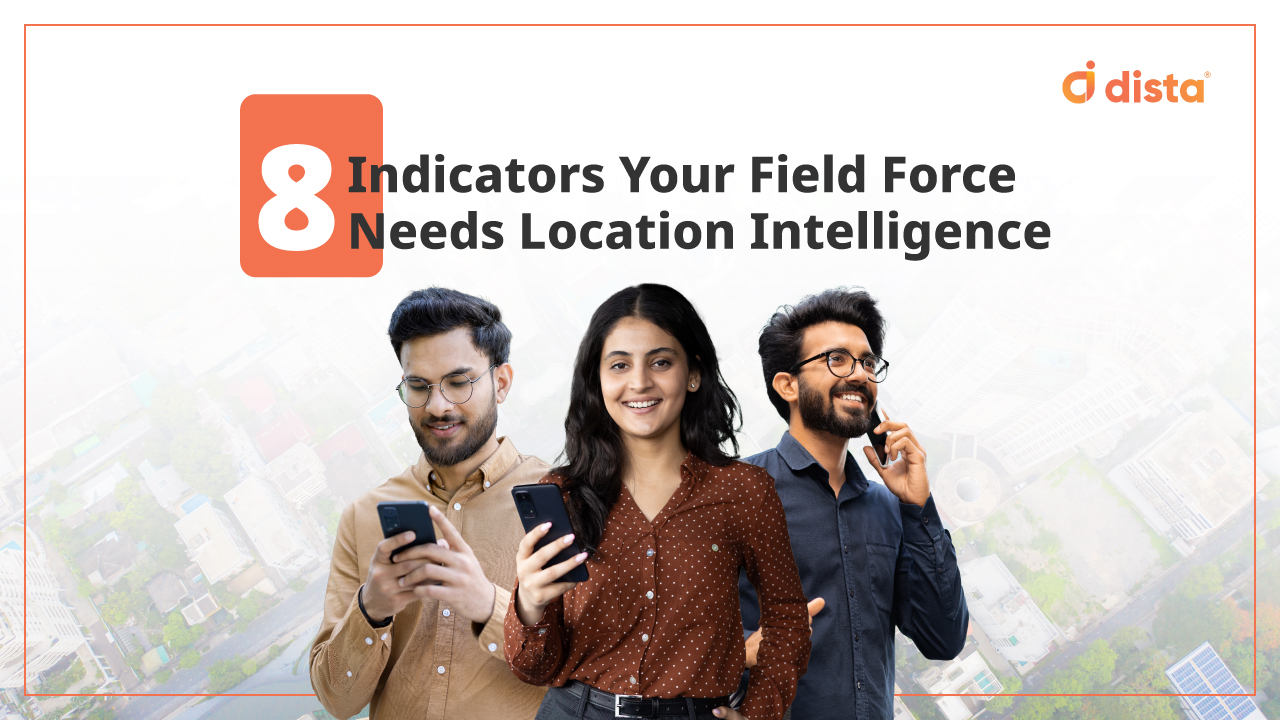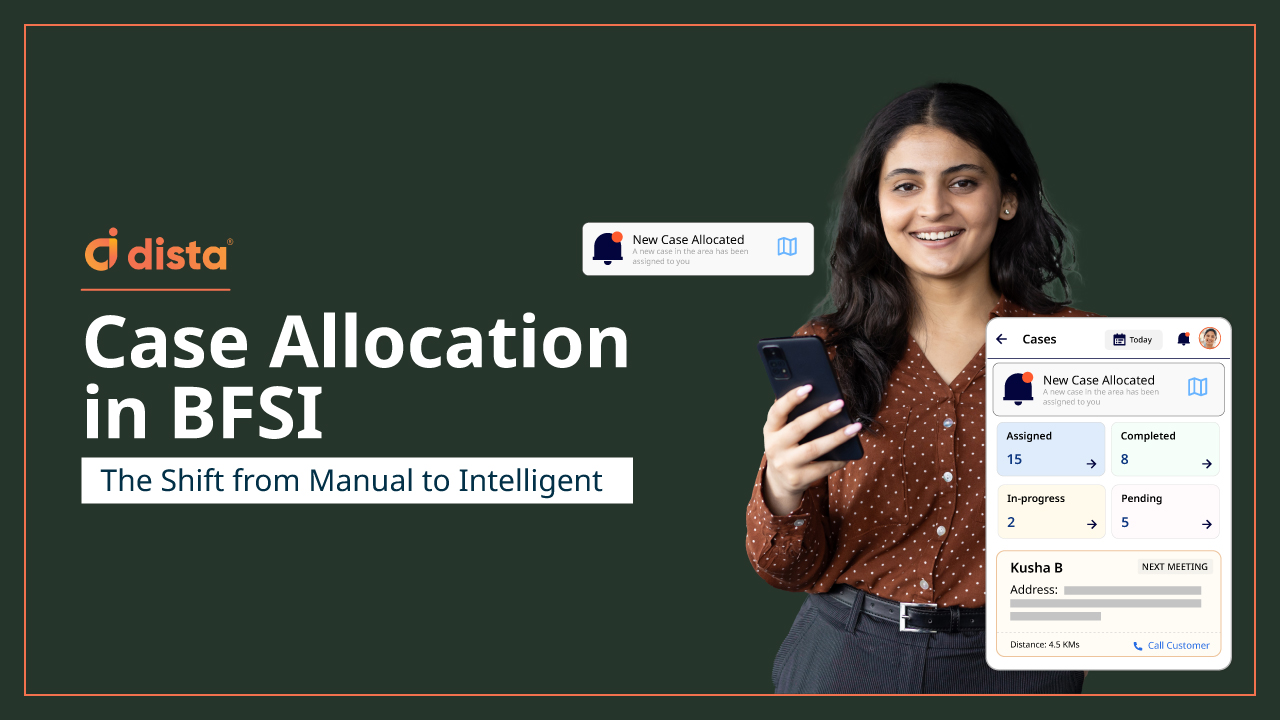Clustering is a method by which you can perform surface-level analysis that helps in automatically identifying patterns and structures in data sets. It focuses on essential features of data that can be enhanced with deeper analytics. Businesses need to perform clustering as part of a broader data discovery strategy to make the most out of it.
Here’s all you need to know about location-based data clustering.
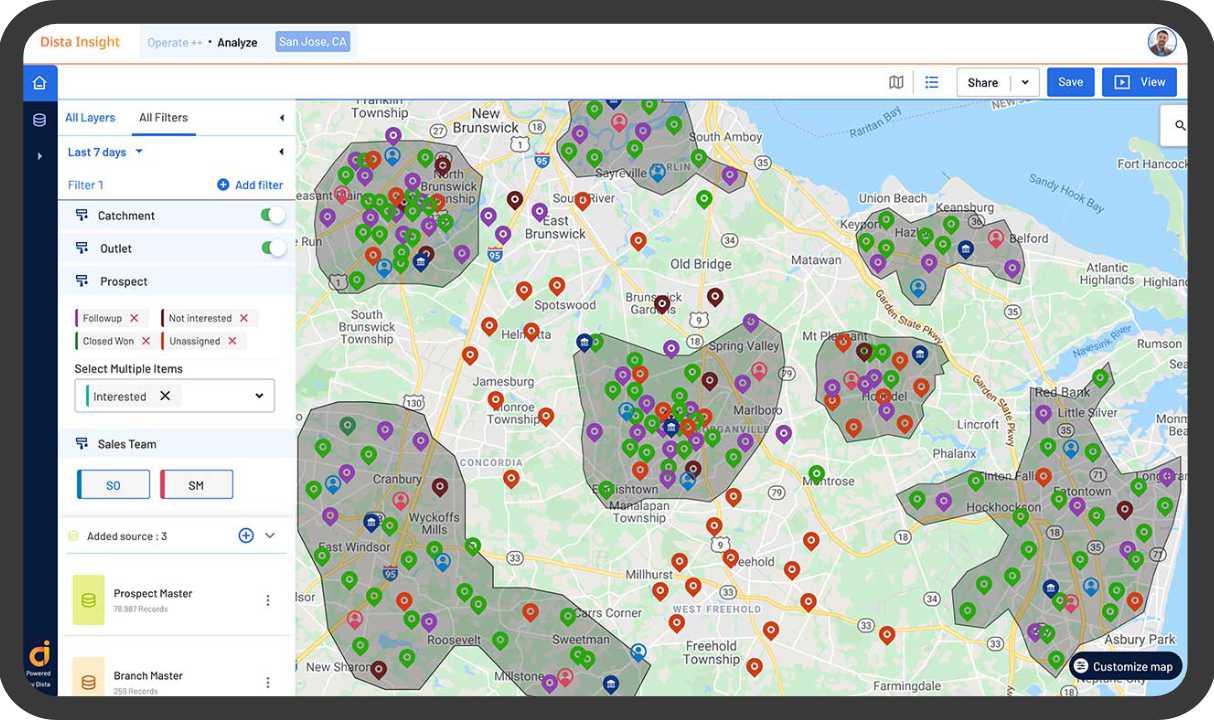
What is Clustering?
Clustering algorithms, also popularly called “clustering,” facilitates natural groupings of people and objects into large data sets. It is a method that makes it easier to read and understand larger data sets. The main aim of clustering is to reduce the amount of data by categorizing similar data items together.
How Does Dista Insight Help in Location-based Clustering?
Dista Insight, our geospatial analytics software, performs clustering analysis based on various data parameters (organization, industry, and point of interest (POIs), among others). It uploads geotagged customers, prospective clients, visits, deliveries, and sales data at a city or a specific geographic level. Our system enables you to define various clustering parameters like (proximity, points, distance, etc.). This helps determine the maximum distance of a polygon to distribute the area into the most optimal clusters. Our advanced clustering algorithm leverages the above data to create polygons and recommend centroids in a logistically optimal manner. Moreover, our software offers manual grid creation and territory management.
Dista Insight facilitates polygon creation for service qualification, sales team allocation, sales coverage, delivery area mapping, and beat planning. Our intelligent system can retrieve prospects’ outlets / POIs at a polygon level as per industry or outlets and adjust clusters based on business criteria and other market data.
With Dista Insight You Can
- Create clusters of the plotted location
- Define minimum/maximum points for clustering
- Cluster by radius
- Cluster by proximity
- View distance between points within or between clusters
- View centroid of the cluster
Benefits of Geotagged Clustering Analysis
Clustering analysis enables you to identify and define patterns between data elements. It can help in customer segmentation, better data classification, and structuring of your datasets. A robust Geographical Information System (GIS) software like Dista Insight identifies patterns that may be otherwise overlooked by finding common traits and transforming that data into a more usable format.
Clustering Analysis use Cases for Industries
Here are some of the key clustering use cases
1) Banks
Banks can leverage our spatial analytics platform to identify positive and negative areas in a specific location regarding the creditworthiness of their prospective clients. It could also help in mitigating risks for loan disbursals and management. It helps them understand the credit risk at an address level which is crucial to improve their credit risk management.
Banks can run clustering simulations to find gaps in their market coverage. By overlaying bank branch data, sales data and loan data layers, senior leaders in the banking industry can easily identify overserved and underserved in a specific area cluster and take strategic decisions accordingly.
2) Insurance Providers
Insurance providers can leverage Dista Insight to identify areas that have higher fraudulent cases. They can isolate new claims based on their proximity to clusters that indicate fraudulent cases. With clustering analysis, insurance companies can check the number of claims reported in a particular region. This enables them to understand the reasons driving the rise in claims.
3) FMCG
Clustering algorithms help group multiple variables and segment customers or prospects. These algorithms identify and club variables that have similar patterns to simplify large complex datasets. Marketing teams can create tailored promotional campaigns for consumers and offer special discounts for audiences in a specific geographic cluster.
Clustering analysis enables organizations to personalize promotional messages to increase footfall and customer retention. It helps in strengthening customer relations and boosting sales. Another area that gains significantly from clustering analysis is sales territory planning. Area clustering analysis ensures that sales leaders organize, align and balance territories optimally. It helps FMCG companies expand sales coverage, improve sales productivity and increase face time with customers.
4) Pharmaceutical
One of the biggest pain points for pharmaceutical companies is to accurately identify and tap pharmacies and distributors in a particular region. Clustering analysis makes it easy to map, organize and club retail pharmacies of any region resulting in effective assignment of medical reps to each cluster. Moreover, it gives sales and strategy leaders a unique perspective on market coverage and leaders can assign tap new areas that were underserved previously.
Every area cluster has unique characteristics therefore depending on each cluster size, and centroid, pharmaceutical companies can also identify suitable locations for warehouses, distribution hubs and more. As a result, it significantly helps in reducing operations cost and improves distribution efficiency.
5) Food and Beverage
Clustering analysis enables food and beverage manufacturers in their site selection strategy. Whether it is site selection for a new production facility, warehouse or distribution center, or a new store, clustering algorithms make recommendations based on consumer buying pattern, order demand, delivery efficiency, SLA adherence and various other factors. The platform offers the flexibility to run multiple simulations and design the most optimized supply chain network to maximize last mile efficiency.
Read more – What is geospatial analysis?
Final Thoughts
Cluster analysis saves a significant amount of time while working with large and unstructured datasets, as it identifies a pattern or structures implicit in the data. Leverage Dista Insight to quickly identify the driving factors that contribute to each group and help explore the correct parts of your dataset to look out for promising clusters.
Get in touch with us to know more.
